 |
The Penitente Brotherhood
|
|
|
 An abandoned Penitente morada near Segundo, Colorado |
|
|
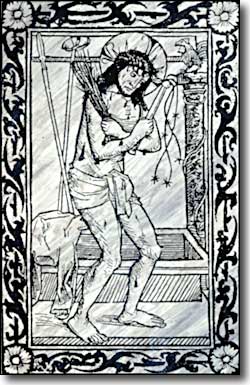
Southern Colorado and northern New Mexico have a long and deep religious history. One culture after another has traversed this countryside and declared this land sacred, building their creation myths and other stories on the rocks and soils of this incredible landscape. The Spaniards came here originally in search of the priest-ruled cities of gold they called Cibola, where they expected to find thousands of natives waiting for baptism and the word of God. Looting all the gold was a side-effect of their form of "Christianizing." Another side effect of the Spanish method was the extreme stratification of society. At the top of the societal heap were the Spanish nobility. Just below them were the full-blood Pueblo Indians. At the bottom of the heap were the genizaros, considered marginal people by the rest of society because of their slave and former slave status. The laws regarding slavery in Spanish New Mexico stipulated that slaves could only be kept in bondage for a period of ten or twenty years, unless their master died, in which case they were freed immediately. However, the Spanish societal structure was so rigid that it was almost impossible for a socially dead slave to become a living person after being freed. So all genizaros were classed as a distinct ethnic group separate from both the Pueblo Indians and the Spaniards. Over time, their celebrations of the Catholic rituals were separated from the other groups and they were, essentially, cast out of the Church. |
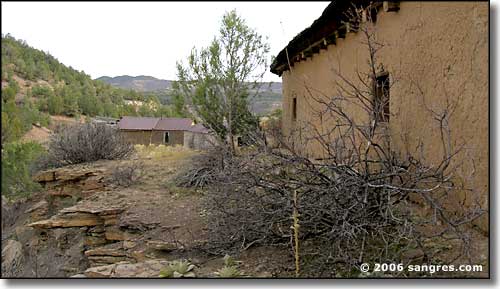 The rear of the morada in Penitente Canyon, near Segundo, Colorado 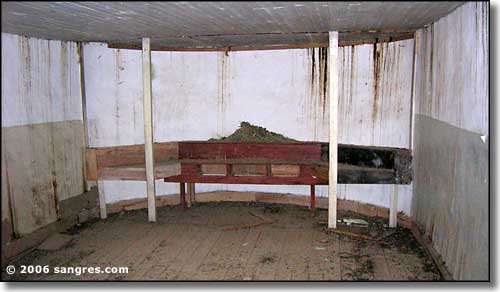 Inside the morada |
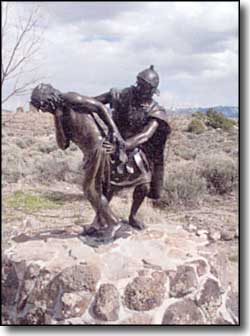
The genizaros spoke a different form of Spanish, married within their group and lived together communally. The vast majority of them were members of the Pious Confraternity of Our Lord Jesus Nazarene, an example of the amalgamation and integration of Catholicism and native beliefs as displayed in their acts of piety: acts of mortification, flagellation, cross-bearing, and the Good Friday Crucifixion of a member. Much of the symbolism of their rituals as Los Hermanos Penitentes is about the story of being led out of darkness into light, as brothers of darkness becoming brothers of light over time. As physical purgation prepares the soul for illumination, the genizaros reintegrated themselves into Spanish society through flagellation and ritual death. This is also the Franciscan mystical formula for spiritual perfection, the structure and practice of which was introduced in New Mexico by the Franciscan friars in their project to Christianize the natives, started back in 1598. In the early 1800's, Los Hermanos' rituals were completely separated from the Church and established in moradas maintained by the confraternity without ecclesiastical oversight. Over time these moradas evolved into corporate political bodies with the eldest brother(s) in charge. After the secularization of New Mexico's Franciscan missions (1830-1850), Los Hermanos had no priests and no access to the sacraments. In this time they evolved and elaborated their own rites and sacred pathways. Themes of death and darkness as a path to salvation gave way to ideas and symbols of light. One of these sacred pathways is the Good Friday Crucifixion: one of Los Hermanos lives out the full Passion Play and is actually crucified, legitimizing the confraternity's devotions and demonstrating their own piety. The first report of a man dying on the cross on Good Friday comes from the 1890's. |
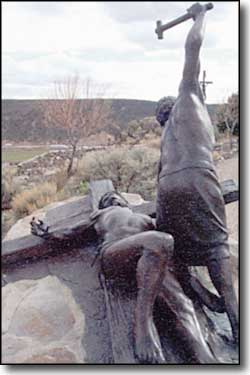
To this day, Los Hermanos testify that their brotherhood is based on faith and mysticism. One of their members describes his commitments and duties like this: "When one becomes an hermano it is like the bond of holy matrimony... we know the role we accept and, like Christ, we take the cross and follow Him. We help the people, we help those that need help... we never say no. We see the needs of the community and we take care of them. We are the leaders of the community." Within the morada, the people stand facing each other, rather than facing a priest and an altar. This further inscribes the egalitarian sense of community among the members. When Los Hermanos come together to celebrate rituals, they create the very sacraments. When they sing, they are singing for members of the brotherhood to feed their souls and their bodies in a veritable communion through the sharing of food. Because of much misunderstanding and downright false advertising, Los Hermanos have gone underground. Seeking anonymity and privacy, they have retreated into the hinterlands of northern New Mexico and southern Colorado where they have continued to develop a very deep spiritual and mystical sense of community. |
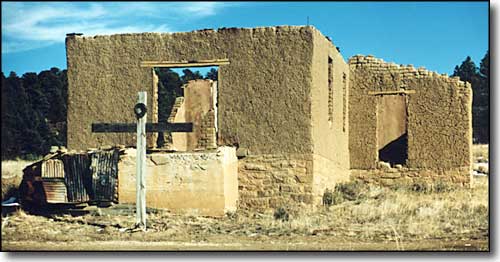 Another old morada in Long's Canyon, west of Trinidad, Colorado 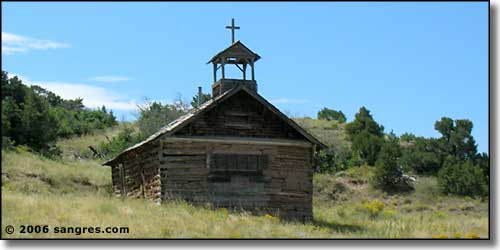 A morada on Yellowstone Creek Road in Huerfano County, Colorado |
|
|
 |
| Index - Arizona - Colorado - Idaho - Montana - Nevada - New Mexico - Utah - Wyoming National Forests - National Parks - Scenic Byways - Ski & Snowboard Areas - BLM Sites Wilderness Areas - National Wildlife Refuges - National Trails - Rural Life Sponsor Sangres.com - About Sangres.com - Privacy Policy - Accessibility |
| Drawing at the top of the page may be from the Museum of New Mexico Color photos courtesy of Sangres.com, CCA ShareAlike 3.0 License. Text Copyright © by Sangres.com. All rights reserved. |